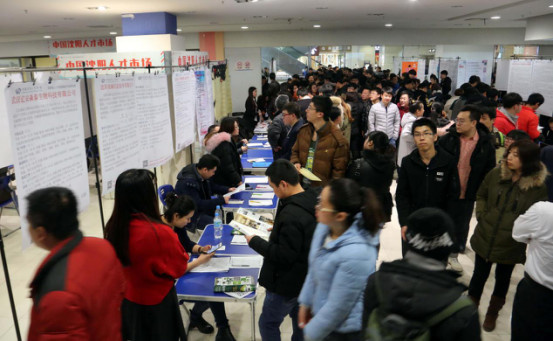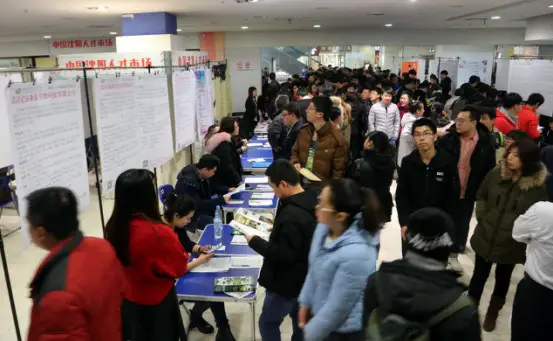By He Yong from People's Daily

To revitalize the economic growth, northeastern provinces of Liaoning, Heilongjiang and Jilin have worked hard to improve business environment, cast off burden and echoed the central government's call on supply-side structural reform. As the biggest province in the region, Liaoning is gradually embracing a brand new economic outlook in recent years.
In previous years, the gloomy northeast economy triggered many bearish voices, and some even claimed that the region was not an ideal destination of talents and investment, casting a shadow on local economy. But the situation is getting better nowadays.
In 2016, Liaoning has made progress in improving business environment and strengthening scientific innovation, according to Zhu Jianmin, a member of the National Committee of Chinese People's Political Consultative Conference (CPPCC), and president of the Liaoning Oxiranchem, Inc., a high-tech industrial company.
"Last year, we have withstood the pressure and cut excessive coal capacity by more than 9 million tons," said Zhang Tiemin, party secretary of Fuxin City, Liaoning province.
Fuxin represents an epitome for such supply-side structural reform in the province. In 2016, Liaoning cut steel and coal capacity by 6.02 million and 13.61 million tons respectively, exceeding the target set for the year.
Zhu added that the province, while cutting the capacity of traditional industries like coal, steel and construction materials, launched favorable policies to support the development of another eight emerging sectors including civil aviation, robots, fine chemical engineering and new material.
The Liaoning Oxiranchem, Inc., according to Zhu, has benefited from the supply-side structural reform.
"My company specializes in fine chemical engineering. Last year, the sales revenue of the company reached 4.5 billion yuan ($ 650 million), up 46 percent year-on year." Zhu said.
"We regard the supply-side structural reform as the main thread to revitalize the economy, and apply the reform to agriculture, service, technology and education sectors." said Chen Qiufa, governor of Liaoning province.
Key development sectors such as high-end equipment manufacturing and fine chemical engineering weighed heavier in local economy last year, he added.
As an effort to improve administrative efficiency, over 422 items that were previously reviewed and approved by 40 units directly under provincial government were transferred to a service center for review. Thanks to the move, the approval efficiency has been raised by over 50 percent.
The province also launched special ratifications in 7 sector successively, and designated 2017 as a key year to improve the business environment.
Zhang Tao, deputy to the National People's Congress, deputy director of the Chinese Academy of Sciences, said Liaoning has paid more attention to the strategy of innovation-driven development since 2015.
He took Dalian as an example, saying the city has launched a series of favorable policies to retain talents.
Due to various reasons, Liaoning had a tight budget in the past two years. To tighten belts, last year, the province cut 5,717 civil service jobs and reduced "three public expenses", namely budget for official vehicles, receptions and overseas trips, by 27.6 percent. It also allocated 75 percent budget to improve people's livelihood.
Last year, Liaoning created over 420,000 new jobs, lifted over 270,000 residents out of poverty and relocated 235,000 children of migrant workers to schools in the province.
Pic:
Photo taken on February 18, 2017 shows job seekers at the biggest job fair after the Spring Festival in Shenyang, Liaoning province. (Photo by People's Daily)
In previous years, the gloomy northeast economy triggered many bearish voices, and some even claimed that the region was not an ideal destination of talents and investment, casting a shadow on local economy. But the situation is getting better nowadays.
In 2016, Liaoning has made progress in improving business environment and strengthening scientific innovation, according to Zhu Jianmin, a member of the National Committee of Chinese People's Political Consultative Conference (CPPCC), and president of the Liaoning Oxiranchem, Inc., a high-tech industrial company.
"Last year, we have withstood the pressure and cut excessive coal capacity by more than 9 million tons," said Zhang Tiemin, party secretary of Fuxin City, Liaoning province.
Fuxin represents an epitome for such supply-side structural reform in the province. In 2016, Liaoning cut steel and coal capacity by 6.02 million and 13.61 million tons respectively, exceeding the target set for the year.
Zhu added that the province, while cutting the capacity of traditional industries like coal, steel and construction materials, launched favorable policies to support the development of another eight emerging sectors including civil aviation, robots, fine chemical engineering and new material.
The Liaoning Oxiranchem, Inc., according to Zhu, has benefited from the supply-side structural reform.
"My company specializes in fine chemical engineering. Last year, the sales revenue of the company reached 4.5 billion yuan ($ 650 million), up 46 percent year-on year." Zhu said.
"We regard the supply-side structural reform as the main thread to revitalize the economy, and apply the reform to agriculture, service, technology and education sectors." said Chen Qiufa, governor of Liaoning province.
Key development sectors such as high-end equipment manufacturing and fine chemical engineering weighed heavier in local economy last year, he added.
As an effort to improve administrative efficiency, over 422 items that were previously reviewed and approved by 40 units directly under provincial government were transferred to a service center for review. Thanks to the move, the approval efficiency has been raised by over 50 percent.
The province also launched special ratifications in 7 sector successively, and designated 2017 as a key year to improve the business environment.
Zhang Tao, deputy to the National People's Congress, deputy director of the Chinese Academy of Sciences, said Liaoning has paid more attention to the strategy of innovation-driven development since 2015.
He took Dalian as an example, saying the city has launched a series of favorable policies to retain talents.
Due to various reasons, Liaoning had a tight budget in the past two years. To tighten belts, last year, the province cut 5,717 civil service jobs and reduced "three public expenses", namely budget for official vehicles, receptions and overseas trips, by 27.6 percent. It also allocated 75 percent budget to improve people's livelihood.
Last year, Liaoning created over 420,000 new jobs, lifted over 270,000 residents out of poverty and relocated 235,000 children of migrant workers to schools in the province.
Pic:
Photo taken on February 18, 2017 shows job seekers at the biggest job fair after the Spring Festival in Shenyang, Liaoning province. (Photo by People's Daily)
 Menu
Menu
 Reform key to revitalize Liaoning's economic growth
Reform key to revitalize Liaoning's economic growth
















